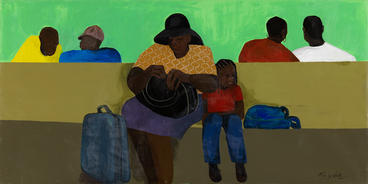In recognition of Black History Month, we’re sharing artworks by African American artists from WAM’s permanent collection. This sampling winds its way from Harlem to Los Angeles and back here to Minneapolis, demonstrating the extensive contributions of Black artists to American art history on a national scale. Taken individually, these pieces exemplify the mastery of each artist—from Sam Gilliam’s revolutionary manipulation of canvas to Sanford Biggers’s ability to make works that are both playful and fiercely political. And taken as a group, these pieces represent Black artists’ ability to both explicitly celebrate quotidian Black life—such as the Harlem Renaissance-era photography of James VanDerZee—while also crafting abstract and conceptual works, as in the sculptures of Lorna Simpson.
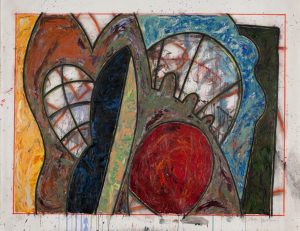
Let’s start close to home with Clarence Morgan (b. 1950), who has been a faculty member in the University of Minnesota’s Department of Art since 1992. A staple in Minneapolis' printmaking community, Morgan’s practice also comprises painting, drawing, and curatorial and writing projects. His work often includes meticulous renderings of organic shapes and linework within geometric compositions. Hermetic Dwelling (1988) is an early example of the physicality that’s become one of Morgan’s trademarks. The work—a mixture of acrylic, charcoal, chalk, and polymer on paper—reflects his talent for mixing materials to create deeply abstract work.
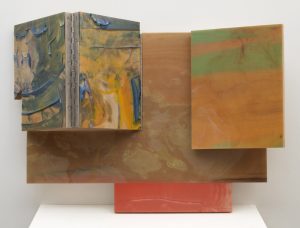
Sam Gilliam (b. 1933), another influential abstract artist, has long blurred the line between painting and sculpture. Originally from Tupelo, Mississippi, Gilliam moved to Washington D.C. in 1962 where he witnessed women hanging laundry on their clotheslines from his studio window. From there, he began to experiment with draping paint-stained canvases, and he appreciated the spontaneity and color relationships that came from the layering of paints on wrinkled canvas. Door Swing VI (2004) demonstrates Gilliam’s ability to work with various materials to produce dynamic 3D works, as he continues to break down the dichotomy between painting and sculpture at the age of 85.
Gilliam’s draped canvases often occupy an entire gallery wall if not the whole room; Lorna Simpson’s (b. 1960) photographic work hold a similar monumental quality. Best known for her conceptual photography where she literally reframes her models—most of whom are Black women—to challenge historical constructions of race and gender, her sculpture in WAM’s collection wields a quieter power. III (1994) consists of a wooden box which contains three wishbones made of different materials—ceramic, rubber, and bronze—tucked into two felt pads, protecting the ceramic wishbone which was intentionally made fragile. While Simpson is known for her incorporation of text to add layered meanings to her images, the only text appearing in III reads: “Wish #1, Wish #2, Wish #3." The wishbone is a symbol that frequently appears in Simpson’s work, referencing her continued examination of desire and autonomy.
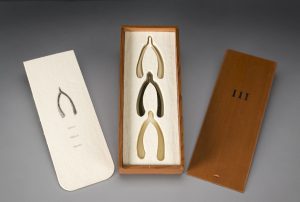
Simpson’s multimedia works show us one way that Black photographers have represented Black subjects; James VanDerZee’s (b. 1886) documentary photography shows us another. A skilled musician, VanDerZee’s lens-based practice took off when he moved to New York City in 1906. He established the Guarantee Photo Studio in Harlem just as the Great Migration brought huge numbers of African Americans to the neighborhood. For the next forty years, VanDerZee assembled an astounding collection of portraits of Black New Yorkers and chronicled the Harlem Renaissance through his photographic practice—including moments like the 1924 Universal Negro Improvement Association Parade, which the Black nationalist organizer Marcus Garvey hired VanDerZee to document. His photographs only received recognition as “fine art”—beyond vernacular photography—in the late 1960s, when re-discovered by photo-historians. Throughout his life (1886-1983), VanDerZee’s photography celebrated everyday Black life in a way few photographers had done before.
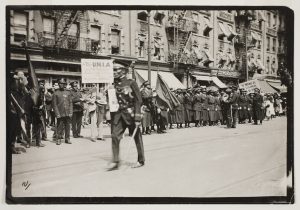
James VanDerZee’s expansive archive is essential to providing an alternative historic imagery of twentieth-century African American life—one that prioritizes the autonomy of each photo’s subject(s) rather than the inherently limited and usually violent imagery that had previously been made by white photographers. In contrast, many of Sanford Biggers’s (b. 1970) contemporary sculptures—much like those of Lorna Simpson—rework and subvert the dominant imagery that has marginalized Black Americans.
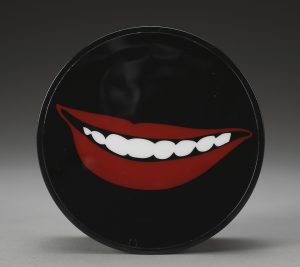
Born in Los Angeles and now working in New York City, Biggers’s body of work crosses disciplines and approaches, integrating painting, textiles, sculptures, video, multi-component installations, and performance. Cheshire Smile (2008) demonstrates this practice of recontextualizing cultural imagery to create new meanings: in this case, Biggers references both the Cheshire Cat from Alice’s Adventures in Wonderland, and the infamous grin adorned by white performers wearing blackface in minstrel shows popular in the nineteenth century. The box—measured at just 2 x 4 in.—is no doubt one of Biggers's smallest objects, though it subtly demonstrates his ability to combine historical imagery with almost playful, contemporary aesthetics.
When put in conversation, these five artists remind us that “Black Art” cannot be narrowly defined. Rather, these works show us that the approaches and aesthetics of African American artists are multidisciplinary, contradictory, and varied in subject matter—works can be as culturally specific as they are abstract.
While this is a sampling of African American artists in WAM’s permanent collection, we hope that you’ll continue to learn more about the different styles and practices of Black artists during Black History Month—and every month after.
If you’re a student, a good place to start is at this Wednesday’s Study Night with the WAM Collective. In addition to opening its doors to students looking for a dynamic study spot, the evening will feature a screening of a WAM Collective-curated compilation of interviews, performances, and footage centered around Black arts and experience. They will also be playing a curated playlist of African American musical artists throughout history. We’ll see you there!


